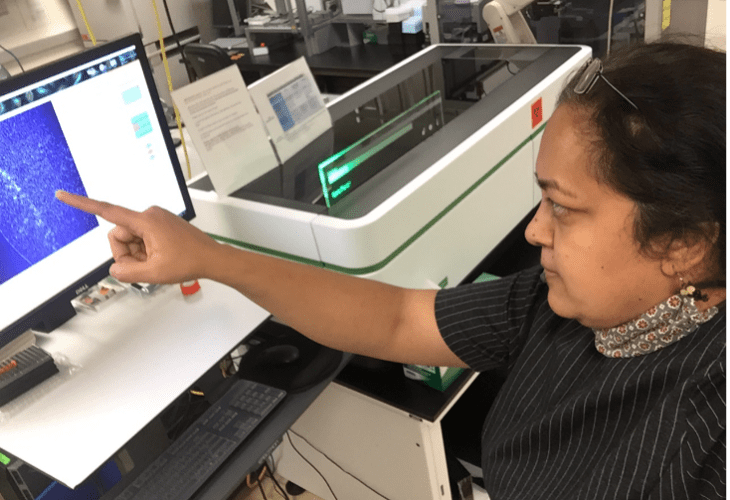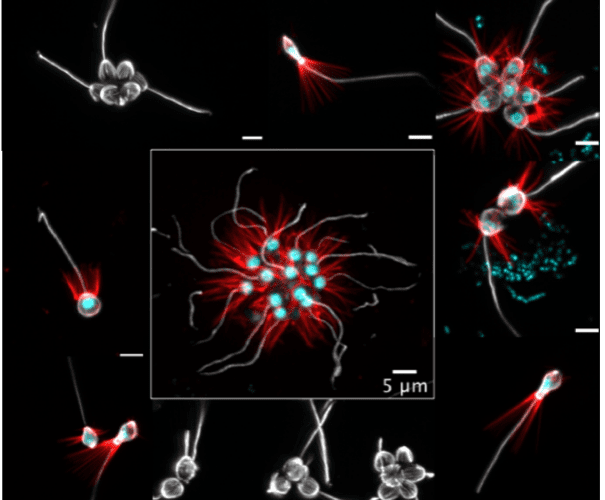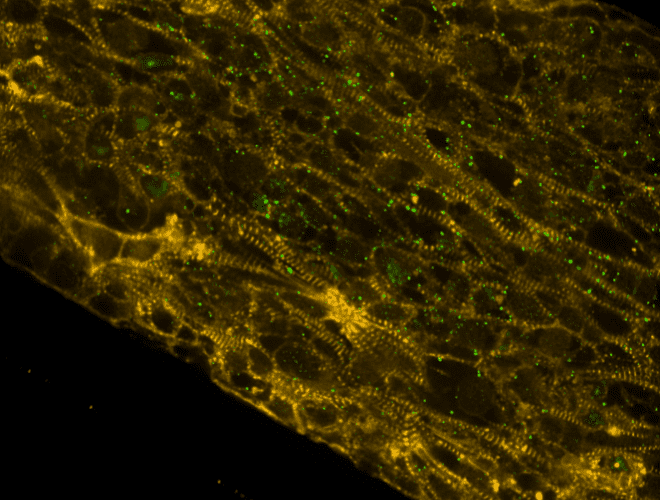Mary West, the director of the Cell and Tissue Analysis Facility and the High Throughput Screening Facility, explains how core facilities increase researchers’ access to equipment and highlights how these facilities play a crucial role in supporting labs’ work during campus COVID-19 restrictions.
Mary West, PhD, is the facilities director of the QB3-Berkeley Cell and Tissue Analysis Facility (CTAF) and High-Throughput Screening Facility (HTSF), two of 32 core facilities on the UC Berkeley campus. The two facilities provide two different sets of instrumentation resources for researchers: “CTAF offers tools to develop cell-based assays,” West notes. “While HTSF allows researchers to miniaturize and optimize those assays, and finally, perform a complex screening experiment under a multitude of conditions, and return to their labs with the data.” While they may be on opposite sides of campus, the two facilities serve complementary research roles that flow together, according to West.
The HTSF is located in the Li Ka Shing Center for Biomedical and Health Services. The CTAF is in Stanley Hall, where most of the QB3 core facilities are located, and is commonly visited by what West calls the “Northeast quad of campus”—i.e., the engineering, chemistry, and physics researchers. While some instrumentation might be available elsewhere on campus, West highlights the convenience of having these facilities nearby, especially for live cell experiments.
“Researchers don’t have to travel across campus to another core facility to use an instrument,” she explains. “Their cells don’t have to suffer in the middle of the summer.”
These facilities are great for researchers who don’t have an instrument they need, or for labs that don’t want to purchase an instrument that may be infrequently used. Additionally, a lab might have the equipment a researcher wants to use, but there is limited time available to use that equipment. “Maybe there’s not enough time slots available for all the researchers who want to use it,” West says. “Core facilities can help alleviate that pressure.”
Having a facility with lots of equipment also opens up the opportunity for it to be used as a testing location for new equipment. “CTAF and HTSF are both great demo sites,” West says. “We bring in potentially interesting equipment for scientists to try out.”
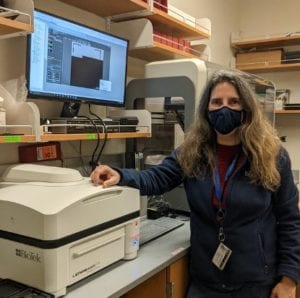
For current equipment, service fees are shared across all instruments in the facility so that payments for a popular instrument can help pay for a less-used one. This system keeps pricing reasonable for small labs, especially as the instruments are billed per hour rather than through memberships. “If you don’t use it, you don’t pay,” West says. These facilities are also available for small startup companies that have a connection to Berkeley, those that might not have the funding to buy all the equipment they need for crucial proof-of-concept experiments necessary to secure investor or government funding.
Automated instruments are the flagships of both core facilities. CTAF offers automated microscopes and an automated flow cytometer; HTSF also has an automation focus. “These are liquid-handing robots,” says West. Typically, in a core facility setting, experienced staff exclusively handle these automation tools within a customer service model. At the HTSF, researchers get hands-on experience and work with staff who provide support. “Researchers can get a feel for using the instruments,” West says. “They’ll have an idea of what it entails— the optimization required, materials costs, processing times, and the amazing amount of data you can capture if you do it right.”
One of the new instruments to the HTSF is the Biotek Multiflo, which helps scale up the validation stage of research. The automation makes dilution series or complex assays easier by decreasing errors from manual pipetting. “It gives better reproducibility,” says West. “We let people know, if they’ve been handling more than five plates at a time, please come get some automation help!”
Collaboration is another core tenet of the CTAF and HTSF. With ten years of experience as a Berkeley facility manager, West is a resource not not only in equipment use, but also in connecting researchers across campus. “Part of QB3’s mission is creating and fostering collaborative research environments. In service of this mission, I help connect scientists to each other.” There is also a high throughput/content screening users group, where researchers from UC Berkeley, UCSF, and other institutions can gather to bounce ideas off of each other and share what’s worked for them for their projects—including the projects run out of the HTSF at UC Berkeley.
For those wondering about using the facilities during campus COVID-19 restrictions, West says not to fret. “Our lab is divided into different rooms and our density management plan allows for one researcher in a room at a time,” West points out. With five different rooms, five people can simultaneously work in the facility and there is plenty of available time throughout the day.
While most students work in shifts to accommodate personnel restrictions, this does not eliminate the use of these facilities; in fact, for students with limited time to work, these facilities could be an unexplored boon. “Many of the instruments are automated,” West notes. “So, researchers can come down, get started, and then run back to their lab and perform other tasks while an automated instrument is running.”
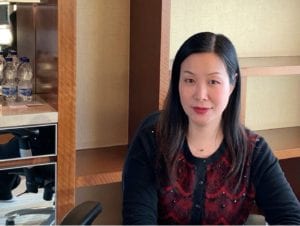
Automation is not the only service that can assist researchers, especially during COVID-19 pandemic. “For new faculty members, or for researchers whose cell culture space is impacted during the pandemic, we offer space to store their materials and use the facility as an extension of their lab’s cell culture,” says West.
This description is key to West. These facilities should serve as extensions of labs for researchers at Berkeley; students should be as comfortable using these facilities as they would be in their own lab spaces. Core facilities like the Cell and Tissue Analysis Facility and the High-Throughput Screening Facility are here to assist researchers and even accelerate their work and—especially in times like these—to provide additional resources to keep Berkeley research on track.
- Mary West, , PhD, CTAF/HTSF Facilities Director
- Pingping He, PhD, HTSF Manager
- Deepa Sridharan, PhD, HTSF Project Scientist
- Professor David Schaffer, PhD, CTAF/HTSF Faculty Director
